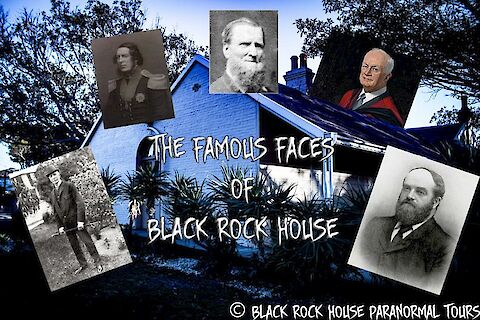

The famous faces of Black Rock House
While Black Rock House is known to be the original seaside holiday home for Victoria's first Auditor-General Mr Charles Ebden, there are a lot of other famous personalities connected with the property. First of course, who was Charles Ebden?
Charles Ebden
Charles Hotson Ebden was born in 1811 at the Cape of Good Hope in South Africa. He was the second son to John Bardwell Ebden who was a prominent merchant, banker, and politician. His older brother became a solicitor general and a judge of the Cape colony so it was only a matter of time before Charles got into politics. In 1832, after traveling between Sydney and the Cape colony, he settled in Sydney. In the Spring of 1835, Ebden's stockman formed two runs on the Murray making Ebden the first stock to cross the Murray. While he had always been well presented and well dressed in Sydney, in 1837 he was spotted in Goulburn wearing a long beard, a fur jacket, and a cap. A very different representation of Ebden than what people had come to know. At this point, he had around 9000 sheep, 30 horses and 9 drays. He had a lot of money behind him.
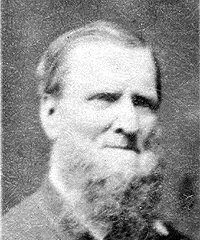
On June 1st, 1837, Ebden attended the first Melbourne land sale where he acquired three half-acre lots on Collins Street for £136. 2 years later he sold them for £10,000. One of these is now known as the Mitre Tavern pub. Professionally, Ebden was elected 3 times to the Legislative Council of NSW. He was active in the separation and anti-transportation movements and the campaign to win the vote for pastoral tenants, helped William Westgarth to introduce German immigrants, was a founder of the Melbourne Hospital and the Benevolent Asylum, and at different times president and secretary of the Melbourne Club. In 1851, Ebden was appointed as Auditor General in Victoria's first official government. In the 1850's he was still active in acquiring pastoral runs, and while he eventually lived in a mansion in Collins Street, he had Black Rock House built as his holiday home. The rest of course is history.
While Black Rock House is advertised for its association with Mr. Charles Ebden, there are a lot of other notable figures who also have a connection with the property.
Tom Horan
Thomas Patrick Horan was a famous cricket player who represented both Victoria and Australia. He was born in 1854 in the town of Midleton near the Irish city of Cork. He immigrated to Australia with his parents when he was a young child. His father James Horan was a carpenter. Not just any carpenter. The carpenter who was entrusted with building Black Rock House. While Tom was only a young child when his father worked on Black Rock House, he likely lived at or near while construction was taking place. Tom went onto become one of Australia's most famous Cricket players from that era.

Sir Henry Barkly
Black Rock House was used to entertain Melbourne's elite. The Governor Sir Henry Barkly rented Black Rock House as a vice-regal retreat between 1861 and 1863. Born in 1815 in Rosshire Scotland, he trained to be in Commerce. In November 1856 Barkly was appointed governor of Victoria, with the highest salary in the empire because the Colonial Office considered the post particularly difficult.
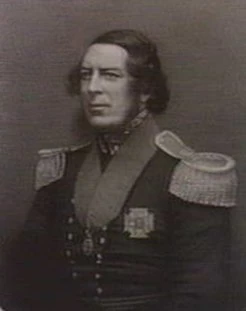
Governor La Trobe
Black Rock House was popular for its hunting meets and provided the ideal location. In 1927, The Argus newspaper said that Governor La Trobe often hosted Hunting Breakfasts at Black Rock House ahead of the meet. This is quite interesting considering the Governor and Ebden did not really get along! Born in 1801, La Trobe appears to have been educated in Switzerland and intended to enter the ministry. He went on to become a superintendent and lieutenant-governor and a key figure in Australian history.

J M Christie Bare Knuckle Prize Fighter
In 1927, The Argus newspaper reported that historically the grounds had been used as the location of a bare-knuckle prizefight between fighters Jack Thompson and J. M. Christie. J M Christie was a legendary detective known as the 'Master of Disguise'. Born in Scotland in 1845, he was bullied as a schoolboy in England due to his Scottish accent. His father organized for Nat Langham to teach him boxing. When he sailed to Australia to work for his Uncle, he built a reputation by knocking out a prizefighter known as 'The Bruiser' in 9 rounds. J M Christie and American prizefighter Jack Thompson fought on the grounds of Black Rock House as confirmed by the Argus newspaper. There are records of a fight between Thompson and Christie in August of 1871 where Christie won the Amateur Championship. I wonder if that was the fight at Black Rock House?
He went on to fight in more fights, one being a prize fight in 1876 against Abe Hicken who was the Australian Champion at the time. The fight was broken up by police to stop the crowd from getting out of hand and declared a draw even though physically it seemed Christie was the victor due to the broken ribs and bad shape his opponent was in. He would later find that the referee and his friends had heavily backed Hicken. He did then go on to have a tour of Australia with World Champion Prize Fighter Jem Mace to box 4 exhibition rounds with him each night. He would also face any locals who felt they were up to the challenge. As his career as a prizefighter came to an end, he accepted an offer to join the Victorian Customs Department as a detective.
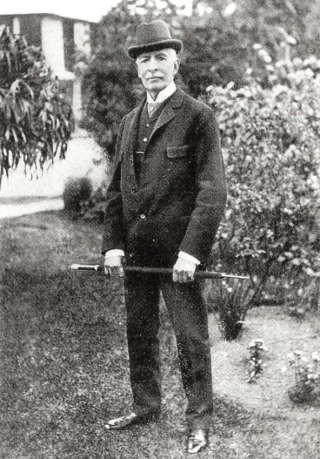
Sir Peter MacCallum
In 1931 Professor Peter MacCallum purchased Black Rock House in an attempt to restore it to its former glory as by this point, it was virtually in ruin and had been up for demolition on various occasions. He started to restore the property as his home. If the name sounds familiar to you, then you are not alone. Born in 1886 in Glasgow Scotland, his family immigrated to New Zealand. After studying medicine in England, he worked in General Practice for 6 months before being called up for service in the Royal Army Medical Corps. He won the Military Cross for his time served in World War 1 on the Western front. He was sent home after being gassed and began focusing his attention on pathology. He went on to win the seat of the chair of pathology at Melbourne University and supported the proposal for a new medical school leading to the Royal Melbourne Hospital being located closer to the university. Peter was dean of the Faculty of Medicine, chair of the Professorial Board, and a member of Council. He also chaired the Anti-Cancer Council of Victoria. He was knighted in 1953 for his contribution to health and education. His legacy is a world-leading cancer center where humanity, care, and research are valued equally. Sir Peter MacCallum believed that nothing but the best was good enough in cancer care - also known as Peter Mac.
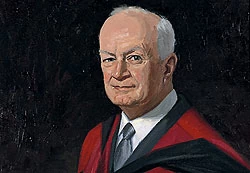
While there is a lot of mystery surrounding Black Rock House, there is also a lot of rich history to be celebrated. This property really is unique, and these associations just make it all the more interesting!
If you enjoy LLIFS, consider buying me a book (otherwise known as buy me a coffee but I don't drink coffee and I LOVE books). Your donation helps to fund the LLIFS website so everyone can continue to access great paranormal content and resources for FREE!

Top pages with similar subjects
Don't forget to follow the Facebook page for regular updates
Join the mailing list to receive weekly updates of NEW articles. Never miss an article again!
Buy the latest and past issues Haunted Magazine
Check out the books written by LLIFS